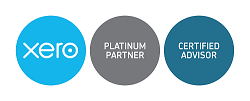We can expect to see a great many changes to taxation management by 2020. There are two key changes HMRC wishes to drive into the current tax system; making tax digital and simple. This blog focuses on how HMRC plans to make tax digital by 2020, to see how tax will be made simple by 2020, click here.
In the near future, tax management will be entirely digital, signalling a complete move away from paper-based tax management methods. Most businesses, self-employed people and landlords will be required to digitally manage their tax affairs and to update HMRC at least quarterly using their digital HMRC tax account by 2020.
These changes will be gradually phased in by 2020, but will first start being introduced from April 2018.
The majority of businesses already submit their tax returns through digital means. In fact, 98% of Corporation Tax returns and 99% of VAT returns are submitted online. HMRC have already provided digital accounts to millions of small businesses, and by April 2016 all of the UK’s five million small businesses will have their very own digital account.
Businesses will be required to use digital tools, such as software or apps, to keep track of their income and expenditure. HMRC has assured businesses that they will make sure free apps and software products are readily available. However, it will likely be the case that many businesses will use commercially-available software packages that compile their tax data as part of their ordinary day-to-day activity. This will allow businesses, and their advisors, to highlight any possible errors (arithmetical mistakes, odd figures etc.)
Once the software has compiled the relevant data, businesses will simply feed it into HMRC systems via their PCs or mobile devices. Updating HMRC in this way will be quick, secure and far more efficient than the returns of today.
Currently, businesses report information on tax returns and pay liabilities long after the end of the tax year. The new system will mean that tax management will operate far more closely to ‘real time’. By being able to keep track of your tax liabilities in real-time, you can easily see an accurate calculation of the tax you owe. A benefit of this is that it will allow businesses to budget accordingly.
To view a timeline (infographic) showing the points discussed in this article, click here.
If you have any concerns or questions about any of the above, please leave a comment and we will respond as quickly as possible.














